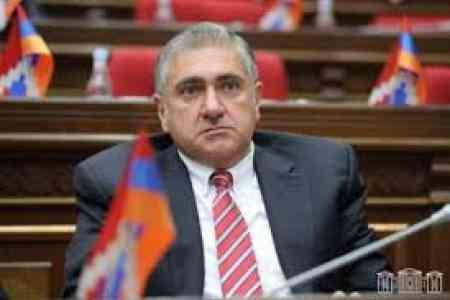


ArmInfo. The day before, Artur Khachatryan, a member of the opposition Hayastan faction, met with representatives of the International Monetary Fund (IMF) and spoke about concerns regarding the situation in the country's economy.
, - Khachatryan wrote on the social network.
The forecasts of the International Monetary Fund (IMF) and the World Bank (WB), updated in April of this year, predict an almost similar slowdown in GDP growth for Armenia in 2025 to 4.5% and 4%, respectively, with the WB expecting an acceleration in the rate to 4.2% in 2026. The Asian Development Bank (ADB), according to its April forecast update, expects Armenia's GDP growth in 2025 to be 5%, slowing down to 4.7% in 2026. The Eurasian Development Bank (EDB) forecasts almost the same slowdown in Armenia's GDP growth in 2025 to 4.7%, while in 2026-2027 the growth rate will fluctuate in the range of 4-5%. According to the Statistical Committee of the Republic of Armenia, Armenia's GDP in 2024 slowed down to 5.9% (from 8.3% in 2024 and 12.6% in 2023), exceeding 10.193 trillion drams ($26 billion). The draft budget for 2025 envisages GDP growth of 5.1%.
The Republic of Armenia became a member of the IMF on April 28, 1992. In October last year, following an IMF mission to Armenia from September 18 to October 1, 2024, and subsequent discussions, a working agreement was reached on the fourth review of the three-year IMF-supported Reserve Arrangement. The review was approved by the IMF Executive Board in December 2025, making $24.5 million (SDR 18.4 million) available to the country, bringing the total available funds to $122.7 million (SDR 92 million). The program is precautionary in nature, and the borrowed funds are aimed at meeting the external financing needs of the economy arising from potential future shocks.